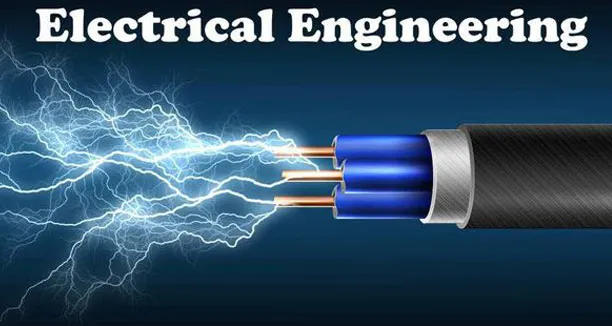The electric engineering enterprise is unexpectedly evolving, and it’s far turning into an increasing number of crucial for engineers to understand the potential of transformative technology. Innovative answers, which include electromechanical structures, artificial intelligence (AI), gadget gaining knowledge of, digital twins, the Internet of Things (IoT), and additive production are revolutionising how electric engineering initiatives are designed and produced. As these technologies end up extra common in development operations, understanding their implications can open up possibilities for multiplied productivity and performance during all components of the engineering technique. Marco Bitran discusses approaches that engineers can harness the power of rising technologies to maximise output from design via prototyping and even production. This in the long run permits them to live competitively in an ever-evolving market and make significant contributions to sustainable growth inside their respective fields.
Overview of Transformative Technologies in Electrical Engineering
With the speedy advancement of generation, electrical engineering has seen some transformative technologies which have revolutionised the sphere. One of the most incredible technologies is the improvement of renewable energy resources as a viable opportunity to traditional fossil fuels. Innovations have substantially reduced carbon footprints and extended energy performance. Another transformative technology is the improvement of artificial intelligence and gadget studying, which have been instrumental in automating strategies and enhancing overall device performance. Additionally, the combination of 5G networks has allowed for faster and extra dependable conversation, which is essential in powering smart towns and improving transportation systems. These and other technologies are the driving force behind the growth of the electric engineering industry and are set to pave the way for a greener and more sustainable destiny.
How 3D Printing is Changing the Face of Electrical Engineering
The introduction of 3D printing has revolutionised numerous industries over time, and electric engineering is no exception. With 3D printing technology , electrical engineers can create complicated designs that have been once not possible to gain through traditional manufacturing methods. This is due to the fact 3D printing produces complex structures with precision and accuracy, allowing electronic engineers to create circuits, sensors, and different electronics more efficiently. Moreover, 3D printing has shortened the time required to provide prototypes, making an allowance for faster layout iterations and higher merchandise. From producing small electric components to growing massive-scale structures, Marco Bitran says that 3D printing is converting the face of electrical engineering as we are aware of it.
Artificial Intelligence and Its Emerging Role in Electrical Engineering
In the world of electrical engineering, there’s a clean and defining shift towards synthetic intelligence. As the landscape of technology evolves, it has become increasingly apparent that AI can play a vital function in both the layout and capability of digital gadgets. The capacity blessings of integrating AI into electric engineering are significant and promising, from automating obligations to increasing precision and accuracy. As engineers continue to explore this emerging field, we will anticipate to see an entirely new realm of innovation and possibility open up earlier than us. The ever-evolving abilities of AI are shaping the destiny of electrical engineering, and it’s an interesting time to be part of this rapidly advancing industry.
Big Data Analytics and Real-Time Monitoring Applications in Electrical Engineering
As generation keeps adapting, the field of electrical engineering has also been revolutionised by large statistics analytics and real-time monitoring programs. Engineers can now advantage valuable insights with the assist of facts into the performance and efficiency of electrical structures. This has brought about main improvements in the layout, maintenance, and operation of electrical systems, in the long run resulting in elevated reliability and reduced downtime. As an increasing number of organisations incorporate those superior technologies into their electrical systems, it’s far clear that big information analytics and real-time monitoring packages are the future of electrical engineering.
Augmented Reality for Control Systems Design and Operation
Augmented reality waves into industries, which include the managed structures design and operation area. This innovative generation combines the digital and physical worlds, allowing engineers to visualise and get right of entry to facts in actual time. Using AR, designers and operators can overlay digital records onto their immediate environment, making figuring out and rectifying technical issues simpler. The result is a more efficient design and operation procedure that may enhance general productivity and decrease costs. Augmented reality has revolutionised the way we method manipulate structures. Marco Bitran emphasises that it brings us one step toward reaching new ranges of efficiency and innovation.
Cybersecurity Solutions to Safeguard Electrical Systems
Cyberattacks have ended up more and more common, and their outcomes may be devastating. However, cybersecurity answers offer a miles-wished guard for our vital electric infrastructure. These solutions encompass firewalls, intrusion detection and prevention systems, encryption, and common machine updates. By imposing those measures, we will notably mitigate the danger of cyberattacks and ensure our electrical systems’ endured operation and reliability. Ultimately, investing in cybersecurity is a funding inside the protection and balance of our groups.
Final Thoughts
Electrical engineering has long gone via a widespread transformation in recent years, pushed by way of advancements in various transformative technologies. 3D printing, artificial intelligence, information analytics, augmented reality, and cybersecurity play more and more vital roles in electric engineering nowadays. Nowadays, engineers can get right of entry to new gear that make it simpler to design electrical structures with extra precision and accuracy and display their operations in actual-time. These superior technologies permit engineers to create faster, extra green, and more dependable answers than ever. But despite this thrilling progress, there’s nonetheless masses of labour to be achieved and engineers have to continue to be vigilant as technology evolves. After all, the opportunities are infinite for remodelling the sector through electric innovations and improvements.








